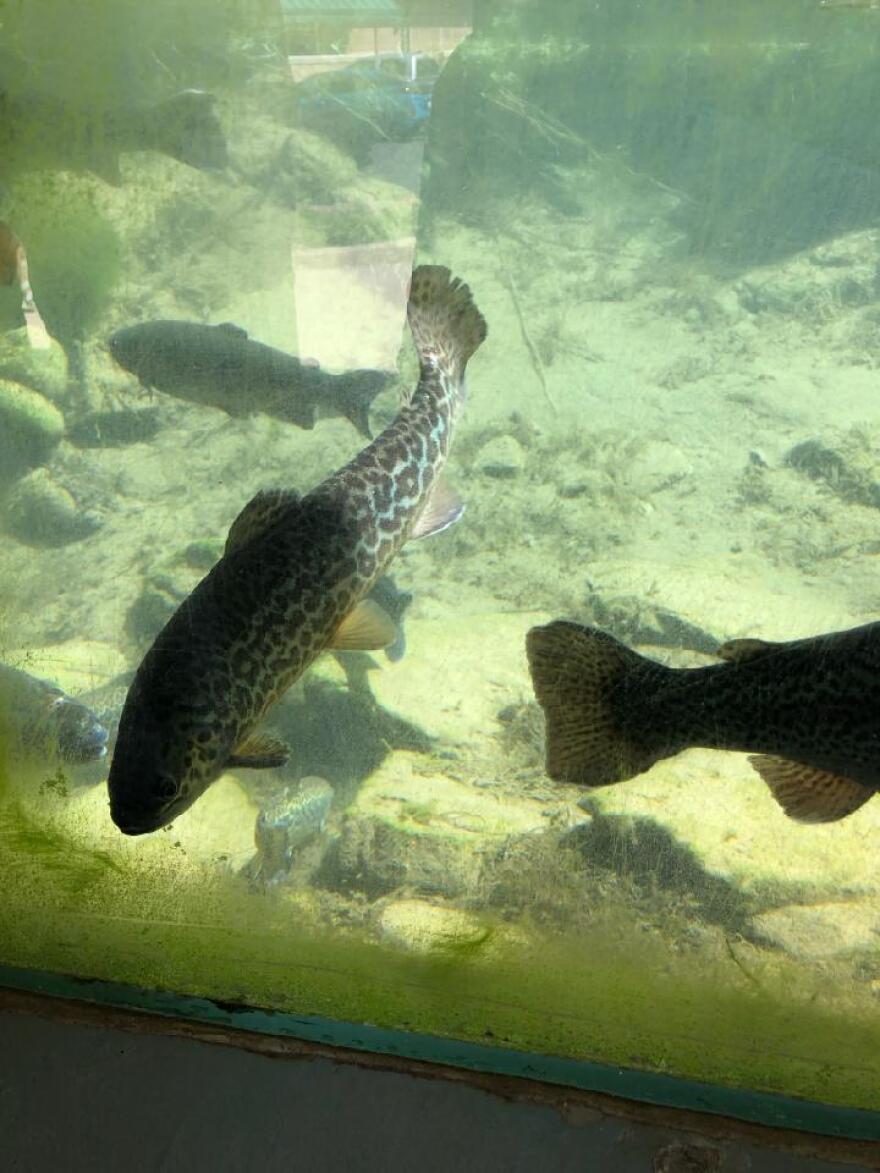The minute I heard there was a well-stocked community fishing pond just five miles down the road from where I live, I dusted off my old fishing pole, slipped out of the house, and threw my line into the Wellsville Reservoir. I had the place to myself. There was snow on the ground but the water wasn't frozen. Within the first hour, I felt the tug on the line and reeled in a 12-inch trout. I was hooked! I returned just about every evening to catch my limit of 2. I called all my friends who liked to eat fish and started to consider adding fresh fish delivery to my resume.
About this time I heard that although trucks from the state hatcheries stocked the community ponds, the hatchery in Kamas delivered fish to high mountain lakes in the Unitas via airplane. A few phone calls later, and I was lucky enough to get invited to watch the loading of the fish.
It was five in the morning when I followed the Kamas hatchery truck out onto to tarmac at the Heber airport. A specially designed Cesna 158 was waiting for us. There, just behind the pilot's seat, was a water tank neatly divided into seven compartments. Seven levers stuck out from the dashboard that would open and close a portal on the belly of the plane.
The crew got right to work. One pumped water into the plane's water tank. Another netted about 8lbs of fingerling trout onto a scale and dumped the lot into a funnel. Suddenly an especially feisty fingerling jumped out of the funnel and landed at my feet. I picked it up, cradling it in the palm of my hand, awed by the sleek beauty of this tiny trout that was exactly the size of my index finger. I wished it well as I tossed it back.
"Flush," said the man in charge. And another man with a red bucket of water sent the fish through the funnel into the plane. Soon the pilot took off. When he got to his target lake, he would drop down and skim over the tops of the trees on the water's edge. He would then open the portal in the belly of the plane and the tiny trout would flutter down like leaves into the water below.

If our feisty fingerling can avoid predators (mostly birds and bigger fish) it will grow to about 5 inches by September. When the water temperature drops to 30 degrees the fish become lethargic and stop growing. Next June, if the lake warms up to 50 degrees, the trout will grow ⅔ of an inch a month. At 60 degrees, the fish will grow an inch a month. But if the water temperature reaches 70 degrees, the amount of oxygen in the water will drop. Any higher and the fish will be severely stressed.
Growing up and backpacking with my family, I was always delighted to come across an alpine lake because it meant that I could take off my pack and stop hiking. But once I got hooked on fishing, I found myself agreeing with the poet Edgar Guest:
A feller gets a chance to dream
Out fishing.
He learns the beauty of the stream
Out fishing
Now, as far as getting up to the high mountain lakes in the Unitas, one thing is for certain. The fish are already there.
If our feisty fingerling can avoid predators (mostly birds and bigger fish) it will grow to about 5 inches



